Results 11 to 14 of 14
Thread: Power tooling for the poor
Threaded View
-
08-24-2013, 08:17 PM #1
 Power tooling for the poor
Power tooling for the poor
A few days ago, I had an epiphany. In bed, sadly, so I had to wait for the night to pass until I could go and act upon it. I am proud to say I still have enough fingers to type the following disclaimer:
This is not intended as a guide. Do not modify power tools unless you understand the risk, take full responsibility and are a little mad.
You see, I want a belt sander and a band saw to speed up my scale-making, but cannot quite afford those, being a student on a student's quintessential budget. I do have a jig saw and a buffing wheel, but lack the compounds for the buffing wheel: terribly hard to find at a reasonable price in the Netherlands.
So here goes: the buffing wheel as a sander. Tape wrapped with the sticky side out, two strokes of sand paper stuck on them (strokes weren't long enough to wrap the wheel with only one). To reduce the risk of the strokes coming off, I cut the ends at an angle and let them overlap slightly, so that no beginning of a strap can catch on whatever is being sanded.
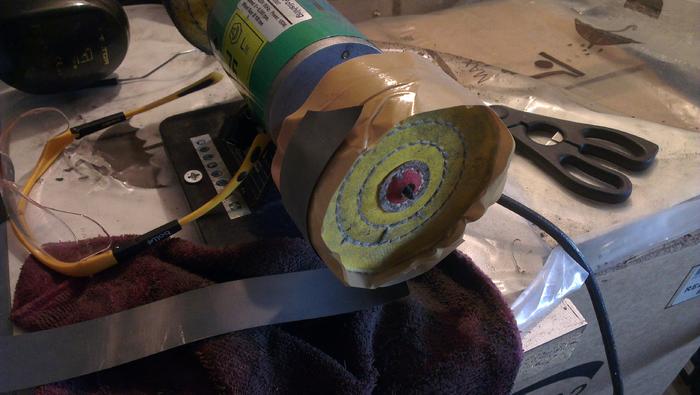
After that, I trimmed the sides of the tape:
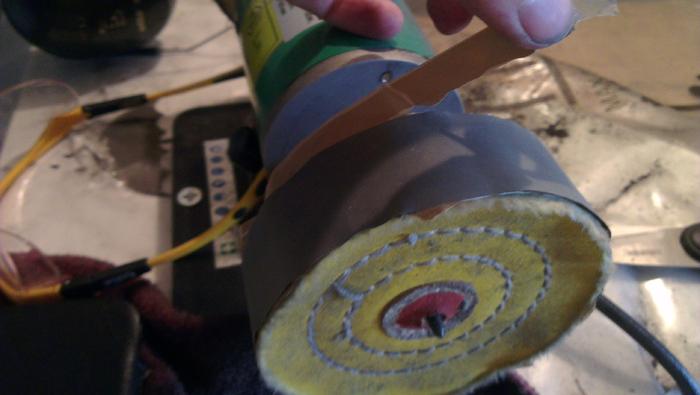
I made sand paper wheels of several different grits, marking the grit on the inside:
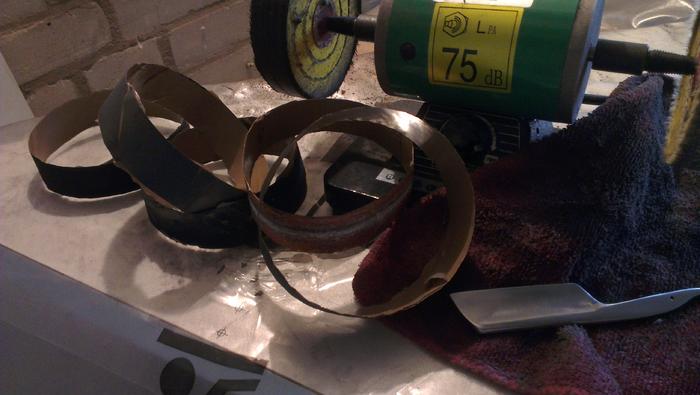
The result is very satisfactory. I finished modifying and rescaling a Gold Dollar yesterday (pics coming up soon) without hand sanding (which I loathe). If you intend to do the same, note that the sand paper may come loose or have small bits flying off, which may catch that which you are sanding and send it flying.
Next up is the modified jig saw. I drilled four holes in its bottom plate and screwed it upside down in a closet that the previous residents had hung on the basement wall. I wanted to make a small table myself at first, but lacked table legs and this closet is not in use anyway. I made a guide of a piece of scrap wood and screwed it some 3 mm away from the saw, just for scale-wide slats.
Everytime I use it, I check if the screws are still sound. Soon, I will also connect an emergency string: in case it comes off while working, it will be suspended from that string, where I will try to prevent the saw from being able to cut the string.
I took lousy pictures, here goes:
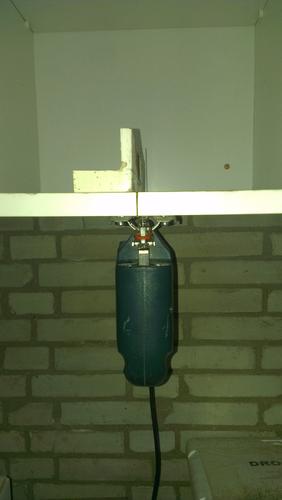
The saw and guide:
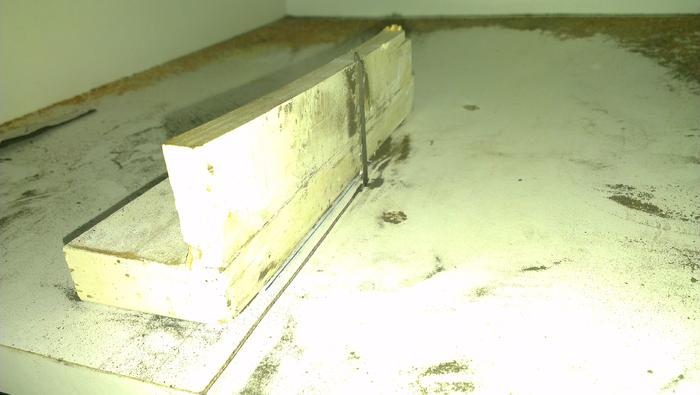
Again, the result is very satisfactory. I am able to saw scales much faster and more precise than I used to with my coping saw. The blades can be changed quite easily as well.
There are a few cons here. The sawing height is very limited and I need to press on the wood I'm sawing to prevent it from being thrusted upwards. Also, the saw can be difficult to see when there is a lot of dust, hence I place my fingers as far away from it as I can. As a last point, this being made inside a closet, the width is quite limited, but that does not bother me much if I plan my sawing well.
Again: this is dangerous! Hand-held power tools should be held in hand. I am aware of the risk I take and would advise anyone against repeating these modifications.
'Nuff said! I'm really happy with my upgrades and will be using them gladly. Comments and criticisms are very welcome, I'm curious what the discussion will lead to
Last edited by Laurens; 08-24-2013 at 08:24 PM.
I want a lather whip


 21Likes
21Likes LinkBack URL
LinkBack URL About LinkBacks
About LinkBacks






 Reply With Quote
Reply With Quote